It has been more than a year since my last article in Hornbill (Jan-March 2017, 10–15), and with each day that passed by, I drifted in and out of my day dream of the ‘great things’ that conservation could achieve, and also on ways of achieving these goals. The thing about working towards goals is that they usually have humble beginnings. Wes Jackson, who co-founded The Land Institute which aims for the development of “Natural Systems Agriculture”, had said “If your life’s work can be accomplished in your lifetime, you’re not thinking big enough.” But the question is, does one have the luxury of multiple lifetimes? When your life’s work is conservation, you need to be reminded that you are dealing with Homo sapiens. “Sapiens” means wise, but humans, I believe, are short-term and utility-maximizing idiots; what I mean is humans make choices that may maximize benefits in the short-term but tend to be disastrous in the long run.
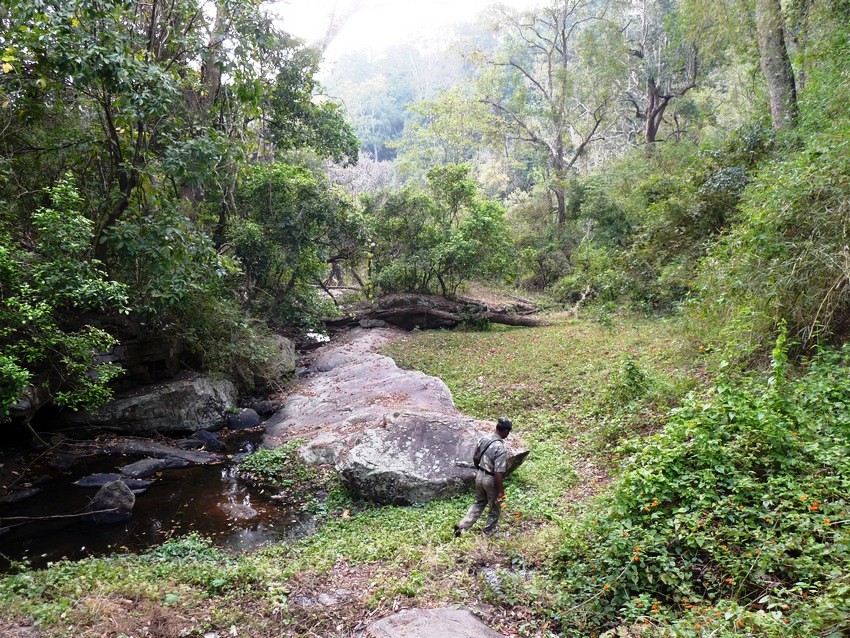
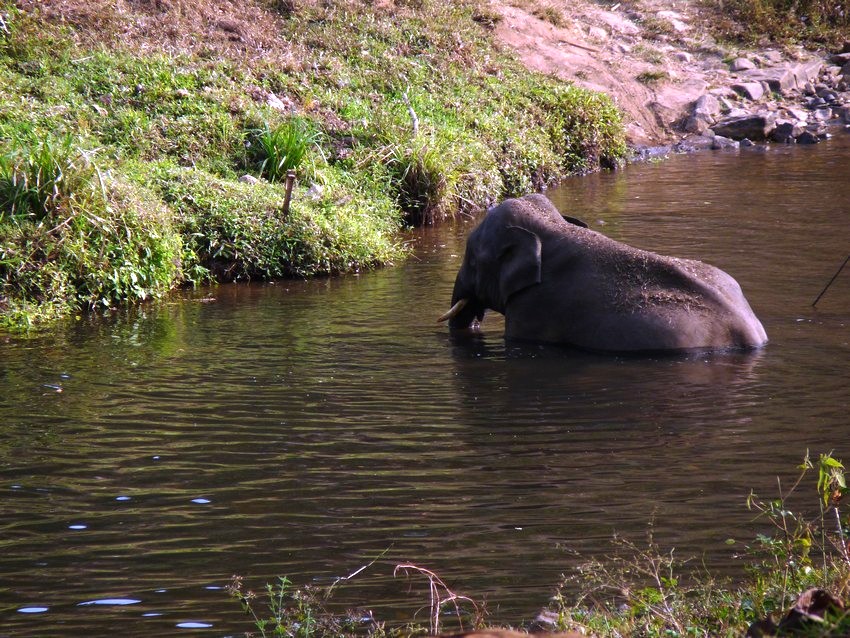
Forest guards patrol forests in some of the most challenging environments, they are pivotal protectors of elephants.The present survival challenge is probably the toughest that elephants have faced in the five million years of their existence.
This becomes a complex challenge as conservation is not one person’s job, it is a collective responsibility. Then again, conservation cannot be achieved through people having just a liking for the wilderness, but through changing belief structures that lead to the desired change in action in a very short space of time. This requires one to parley with human minds, and this brings us to my subject of work – Conservation Behaviour. I started a division on Conservation Behaviour a couple of years ago at the Wildlife Conservation Trust, with a vision to bring about the desired change in humans to achieve conservation goals. This division, which I now head, provides technical inputs for designing conservation interventions. It uses frameworks from economics, psychology, sociology, and anthropology, with strong ecological foundations as tools to gather insights into ground realities. It acts as a catalyst between grassroots action and policy stimulus. We evaluate and compare existing policies and practices, and assess their impact using primary and secondary data, to come up with white papers. We use contemporary public policy design models to suggest optimal policy to aid conservation.
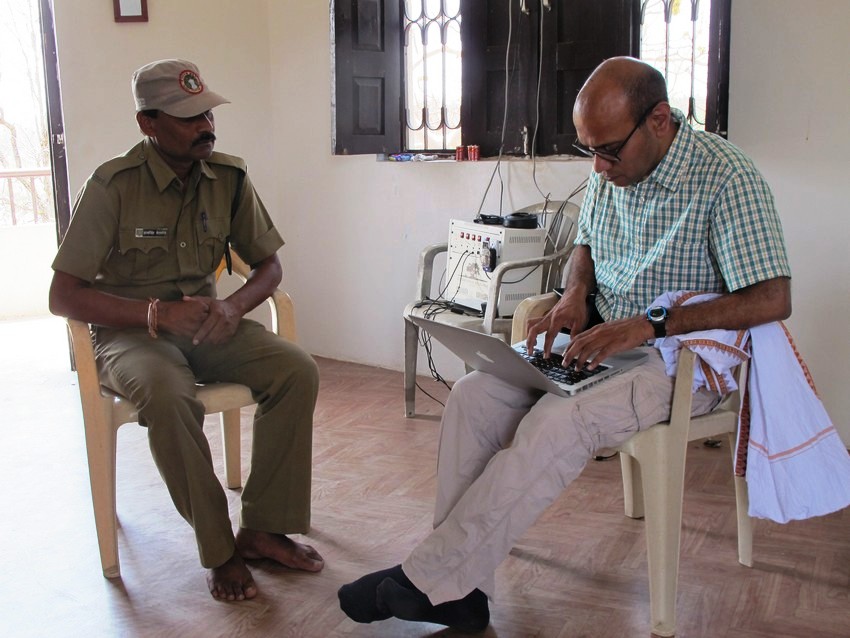
Protection camps are isolated from civilization, with most lacking basic amenities such as electricity, water supply, and comfortable living and working spaces. A forest guard’s job profile is physically challenging and psychologically stressful, especially in tiger reserves. Talking to these guards to understand their associations with the forest and their job is essential. Photo: Rushikesh Chavan.
Our Division (Conservation Behaviour or CB) works across individuals, groups, organizations, corporations, government, and administration. Currently, it is using tools from economics and social psychology to understand the drivers for various actions, such as firewood consumption by villagers living in and around forest, and measuring associations of forest guards towards forest and their duties, making CB an amalgamation of economics, psychology, ecology, and other social sciences for the conservation of nature.
My last article talked about how the tools of economics, such as valuation of ecosystems, cost-benefit analysis, game-theory applications, Elinor Ostrom’s principles, and much more, provide us with a language to communicate. However, there are limitations, and one must understand that such tools are like a doubleedged sword. In economics, we use the belief that people make rational choices. This rationality is based on the information that an individual has, and the short-term constraints he/she faces at that point of time. We do observe that not all such choices make economic sense. Are we then truly rational?
We know that choices are made based on our preferences and associations, and these lead to our actions. That’s our cue for the parley with the mind. I am not trying to have a conference with the mind, or treat it as an enemy, or create a revolution. What I am trying here is to provide a perspective of thinking to people, a perspective that aligns our actions in a way that we have a continued growth path that does not destroy the ecosystems and the services we get from it. To do this, first I need to understand the human mind; how it thinks in a societal framework, and the connections of human behaviour and its interactions with nature. There lies the realm of conservation psychology.
It is romantic to think that you can provide people with a perspective by indulging their minds, but it is not that simple. The question then is how does one move ahead? We started with standard procedures and proven theories and applied them to conservation. What took really long was asking the right question. What exactly do we want? Are these tools the right ones? Are we doing things just because we found some tools? Once these questions were answered, we set to work on our conservation challenges.
Forest guards are the foot soldiers of the forests of India, forming the first line of defence. Therefore, we wished to understand how forest guards associate themselves with forests, wildlife, and their own duties. With this in mind, we went to collect data in tiger reserves, using a robust sampling method. We conducted two survey tests: one explicit, the other implicit. We interviewed ‘sample’ guards at their protection huts, filling up the questionnaires with their responses. This is tough, as you have to maintain composure at all times for days on end and remain neutral, ensuring that your own biases do not creep in. The rigour is tremendous but there are perks to this job, like being able to work in remote forests, and to watch the stars at night from the verandah of a century old forest rest house.
During a questionnaire survey, all care that can be taken is taken, surveyors are trained, questions are carefully worded, bias is eliminated, and so on; yet there is a chance that the response might be what the guards perceived to be the right answer. This we realized in one of the tiger reserves, where we sampled the guards who came to the centrally located health camp. The results were inconsistent and had to be discarded. Smart solutions do not necessarily give the desired results!

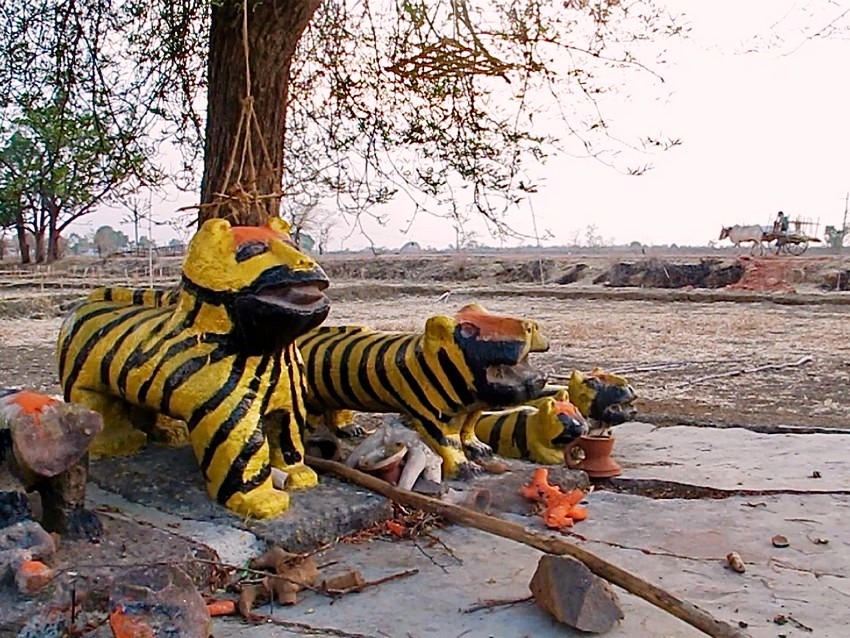
Researchers need to carry out qualitative assessments to understand forest dependence, associations, and culture of villagers living in and around forests to find solutions to problems. Photo: Rushikesh Chavan.
In the implicit test survey, known as Implicit Association Test or the IAT, we showed guards a set of pictures of forests, wildlife, villages, agriculture, on laptops. They were asked to hit a couple of keys in response, as quickly as possible. It plays out like a game that allows us to measure their associations. The data is just numbers, showing the time taken for each response, which is in milliseconds. But these numbers together reveal a story, providing us insights into the minds of the forest guards. So far, we have collected data from eight tiger reserves and one wildlife sanctuary. Our aim is to collect data from all tiger reserves in at least one state.
Once we have the data, we can analyse, interpret, and use it. It is easy to look at data, the results, and put forward findings, but one needs to be prudent, knowing what impact one’s findings can have. We will use our results to design interventions that are targeted at improving motivation levels of frontline forest staff. This is possible as the associations forest guards have with their work, forest, or wildlife manifest into motivation (or the lack of it). If we can do this, that is, improve the associations resulting in better motivation, we could improve the protection of our forests multifold. After all, these forest guards are, as I stated earlier, the first line of defence, the police of the forest, the enforcers of law.
This sounds like a good start, but we also have to think of the forests that are not protected as such, and are forests that communities depend upon. The forest cover of India currently stands at about 21.34%. The total area protected as forest is only 5%, the rest is under multipleuse areas. Our researchers have been studying tigers living outside protected areas for a few years now, and have come across an extremely fascinating forest block with 600 villages and 44 tigers. This poses a challenge for conservationists, right in their faces!
The people who depend on forests for firewood, food, fodder for their livestock, income, and much more, are some of the most marginalized ones in India. Such unprotected forests are rapidly degrading, and there is human-wildlife interaction that many a times leads to conflict. And in all this chaos, there are tigers breeding and their numbers constitute more than half of those inhabiting tiger reserves in this country, if compared one on one! The dilemma is, if you stop the people from exploiting the forests, you send them to the guillotine; if you allow business as usual, the forest would be gone and eventually the people would be in peril. So what do you prefer, a slow death or an instant one? That is what challenges looks like. Can we declare the area as a national park? No, we cannot. So people will have to change their behaviour for their own survival, if not for the survival of the forest and the wildlife it harbours.
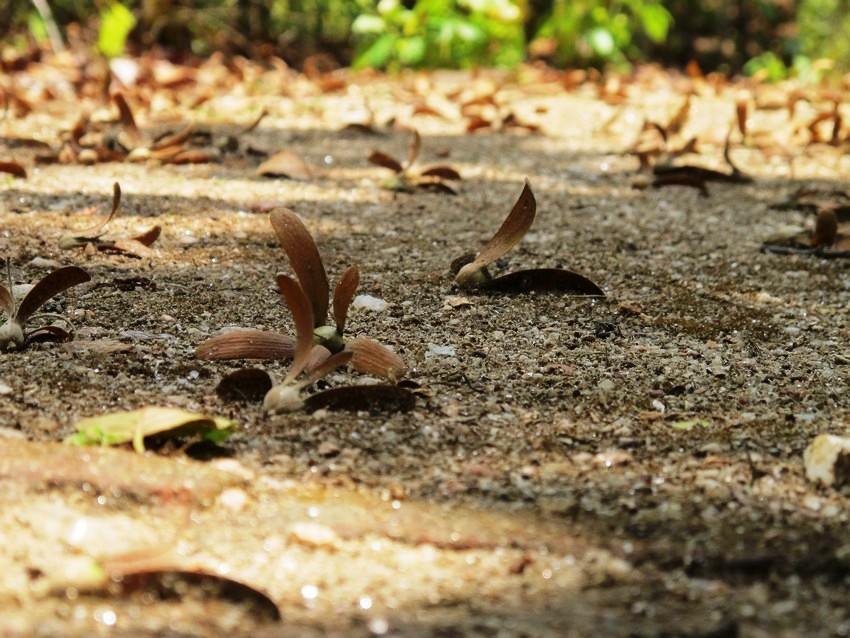
My hope is that the seeds of conservation behaviour will spread and take root in mainstream conservation practices. Photo: Rushikesh Chavan.
CB Division decided to take up the challenge. We identified 144 odd villages that were of conservation priority, and set out to determine the drivers for firewood consumption. Firewood extraction from forests leads to degradation, and if this degradation is to halt, firewood consumption needs to go down, and besides alternative fuels, there has to be a behavioural change in the psyche of the people. Hence, our objective was to develop a map of the economic and psychosocial understanding of the communities with respect to firewood consumption. We collected the largest dataset from the region from over 3,000 households. The psychological insights that it will provide could be the key to finding an equilibrium, of having the cake and eating it too.
These are just a couple of initiatives I have started, and there is a lot to do. Conservation psychology will have to play a big role, if conservation has to succeed. We don’t know where the tipping point is for nature to just accelerate the rate of destruction. We also don’t know the tipping point of conservation action, where we could reverse the damage. But if there is one way to reach that tipping point, where we can hope for a snowball effect for conservation, it will be through the tools of conservation psychology. The applications of which are not just to change behaviours of individuals, but communities, bureaucracy, and the government alike.
Conservation psychology is in its infancy, at least in our country. Only time will tell if the promise that it holds fructified or not. What I can do is make an honest attempt. As for you guys, let me share a conservationist’s frustration – passionate people with inadequate skills and skilled people with inadequate passion for conservation. One does not need to know major details of ecology to be able to contribute. If you have the skills, no matter in which field, you have a chance to contribute, if you can also develop the passion. So don’t look at conservationists to solve problems, be a part of the solution. For this you will have to sharpen your skills, think how they can be applied, go out and try. Having said that let me put a caveat here – good intentions are not enough. You will have to build your understanding of conservation issues or else you might just spoil it for someone else forever. Let me give an analogy: I have a passion for saving lives, so I will operate on patients on Sundays! Harness your skill, develop it, put it in a conservation perspective, and join forces with conservation organizations. You could make a really meaningful contribution.
As for Conservation Behaviour, it is no magic potion, but it definitely is a melting pot for various sciences working towards the cause of nature conservation. It will not only provide the language to speak in, but also a platform for bringing about a desired change through collective action.
This article was first published in the BNHS’ Hornbill magazine, July-September 2019 issue.
——————————————————————————————————————————————————————
Rushikesh Chavan is a conservationist and leads the Conservation Behaviour Division at Wildlife Conservation Trust.
——————————————————————————————————————————————————————
Disclaimer: The author is associated with Wildlife Conservation Trust. The views and opinions expressed in the article are his own and do not necessarily reflect the views and opinions of Wildlife Conservation Trust.
Related Links
- Conservation Strategy
- Thought Leadership
- Site Security Training for STPF officials
- Media
- 9 Steps to an Environment Friendly Lifestyle
- Law Enforcement
- Reinforce rules in tiger corridors, buffer zones: NTCA
